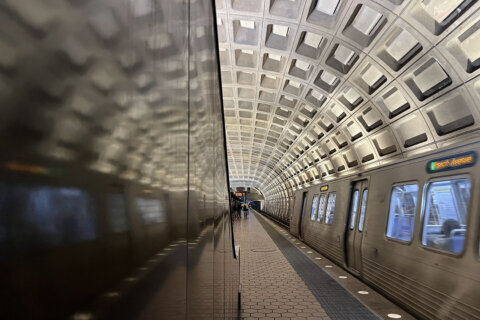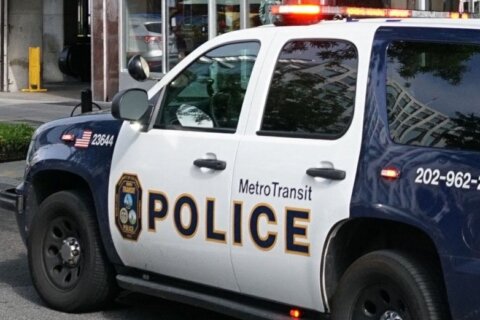WASHINGTON — A divided Metro board left the transit agency’s leaders with little guidance about which drastic measures they would support to close a possible $275 million budget gap next year, and fare increases and service cuts remain on the table for consideration.
Metro leaders outlined severe ridership declines that are expected to continue next year, plus the cost of proposals to improve rider experience, and the budget hole that would be left if federal funds aren’t shifted again from a separate, capital budget to fill an operating budget hole.
Board members outlined their own positions, but did not reach any consensus to guide General Manager Paul Wiedefeld as he presents his budget proposal expected on Nov. 3 for the operating year that begins next July. They did ask that several different options be analyzed.
D.C. Councilmember and Metro board Chair Jack Evans reiterated that he and his fellow representatives from the District oppose any fare hikes or service cuts. They also believe that D.C., Maryland and Virginia governments should help cover any remaining shortfalls not addressed by administrative of other spending cuts.
Evans estimated such a subsidy would amount to $245 million divided across the jurisdictions that support the transit agency. He argued that the funding cannot wait until Metro shows significant improvement.
“It’s a chicken and egg situation, and we’re the chicken and they should give us the money,” Evans said.
The District could veto any fare increases. But Fairfax County Supervisor and Metro board member Cathy Hudgins said a small fare hike should remain on the table as long as Metro continues to show riders that it is making progress with the ongoing rebuilding work.
Maryland Metro board member Michael Goldman suggested that he would support a larger fare hike overall so that riders would pay through the farebox rather than through taxes.
One plan floated by Metro staff would increase rates more for middle-distance commutes than for the longest rides and would cap the maximum fare at just $6 rather than the $5.90 maximum rush hour fare today.
Metro staff also outlined the possibility Thursday of a 25-cent increase in regular bus fares plus additional increases for some limited-stop services.
The fare increases could be coupled with service cuts for specific bus routes and reductions in train service. That would mean longer waits at all certain times of day.
Plunging ridership
Chief Financial Officer Dennis Anosike acknowledged that either fare increases or service cuts at a time where the perception of Metro performance is already low would only add to a precipitous decline in ridership.
Metro projects an approximately 10 percent decline in ridership during the year that begins next July. That would come on top of a similar decline this year due to riders turning away from the system during repair zones that limit train service and last for weeks at a time.
Ridership in those work areas has been 10 to 15 percent lower than even the much lower ridership Metro is already experiencing this year. And riders take weeks or more to return to the system after round-the-clock track work ends on their line.
Federal Metro board member Robert Lauby worries many will not come back at all.
“If we’re going to drive the riders away with increased parking fares, increased train fares, less service, closed stations, we’re never going to be able to turn that corner and start on the uptick again,” Lauby said.
One Metro staff plan that is part of the budget process would close low-ridership stations outside of rush hour. Among others, that would include all stations on the Blue, Orange and Silver lines east of Potomac Avenue with the exception of the end-of-the line stations at New Carollton and Largo Town Center.
“Because of SafeTrack, I think riders that we’ve had in the past, we won’t see ever again because companies in this region are making adjustments to the style of work, they’re doing telework … and I don’t think it’s logical that when SafeTrack is over that these companies are going to suddenly pull that benefit from their employees,” Lauby said.
Wiedefeld told reporters Metro is not in a “death spiral,” because Metro contributes so much to reducing traffic and pollution in the clogged Washington region.
But at the committee meeting where the budget possibilities were discussed, Prince George’s County Metro board Member Malcolm Augustine called the ridership projections part of a potential “downward spiral” that requires Metro to point to a light at the end of the tunnel.






